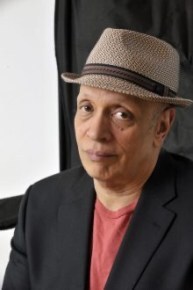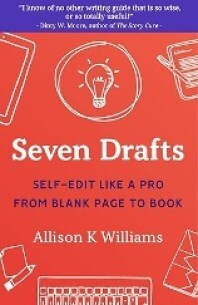Your Book is Bigger Than Your Head
Rob Kelley here, talking about how to tackle whole book revision.

In 2018 famed author Walter Mosley was a featured speaker at the Thrillerfest conference in New York City and I got to hear him present. It was not a typical author talk, rather a philosophical consideration of the act of writing. And one of the things that has stuck with me from that talk is his concept the “the novel is bigger than your head.”
In a 2017 Paris Review interview of Mosley, he put it this way: “The novel is bigger than your head. A novel is a gigantic, rambling, incredible thing. All you can do is start.” As with all writing advice, often the most useful advice is that which you are primed to hear at that exact moment in your writing journey.
That summer at Thrillerfest was the moment when I was trying desperately to figure out how to finish the novel that eventually became Raven (High Frequency Press, 2025). The book had existed in a number of iterations, first as science fiction, then again as science fiction, then as several unsuccessful attempts at a thriller. In that form a number of people read excerpts and liked the writing, but I knew it wasn’t finished, wasn’t what I wanted it to be.
Mosley’s concept helped calm in me the fear that I had lost control of my novel and that I wouldn’t get it back. In that Paris Review article, Mosley goes on: “Roy Lichtenstein, who I knew quite well actually, would say the reason most painters fail at art—not at painting, but at art—is because they know what the picture is going to be before they approach the canvas.”
I am not a “pantser.” I do need to outline, but the discoveries that happen mid-book—the character you didn’t know you needed who just shows up on page 49, the piece of dialogue that takes your breath away because where the hell did that come from?—are miraculous. So I can outline all I want but that “shitty first draft” is a living, breathing thing. It writhes and expands and contracts and moves and is, without question, out of control.
So Mosley’s concept helped me see that I could accept that my draft novel would go beyond my ability to easily encompass and tame it. But I had to accomplish it somehow.
 A number of us at the Maine Crime Writers Blog collaborated on a post a couple of weeks ago, “Actually Useful Writing Books,” in which I gave a big shoutout to Seven Drafts by Allison K. Williams.
A number of us at the Maine Crime Writers Blog collaborated on a post a couple of weeks ago, “Actually Useful Writing Books,” in which I gave a big shoutout to Seven Drafts by Allison K. Williams.
Here’s where Williams’ book was incredibly helpful. After that first draft, she outlines a progressive series of edits focused on very specific tasks. First a story draft, in which you dig into the story arc. Then a character draft, in which you attend to the unfolding story for each major character, ensuring that their individual arcs are complete and compelling. A technical draft in which you dig into showing not telling, managing sentence, paragraph, and scene length, fixing verb tenses, removing passive voice, and fixing repeated word frequency. For this draft, I am a fan of the online tool Autocrit, which helps identify some of these issues for you. The next step is a personal copy edit. For this one, my trick is to have it read aloud to me. I use Microsoft Word’s read aloud function, because that sentence that looks right on the page and sounds fine in your head can definitely be missing a word or have an odd syntax you only hear and don’t see.
I have taken her principles and tuned them for the idiosyncratic weaknesses in my prose. As a plotter, I know the big beats and cliff hangers, the threats and the saves. So when I’m drafting I tend to push the action forward, sometimes to the detriment of characterization and scene detail. So after the technical draft I do a “detail draft,” where I consider what my character sees on her walk through the MIT campus, and how cold it is in the big house she shares because it’s too expensive to fully heat.
By that draft the book is definitely bigger than my head, but is also now something richer and fuller than I could have imagined when I first outlined it.
Lea Wait's Blog
- Lea Wait's profile
- 509 followers



